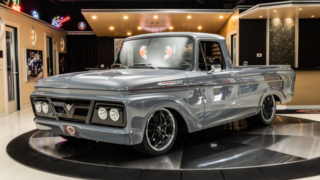Essential Spring & Summer Maintenance Tips for Cars, Trucks, and SUVs!
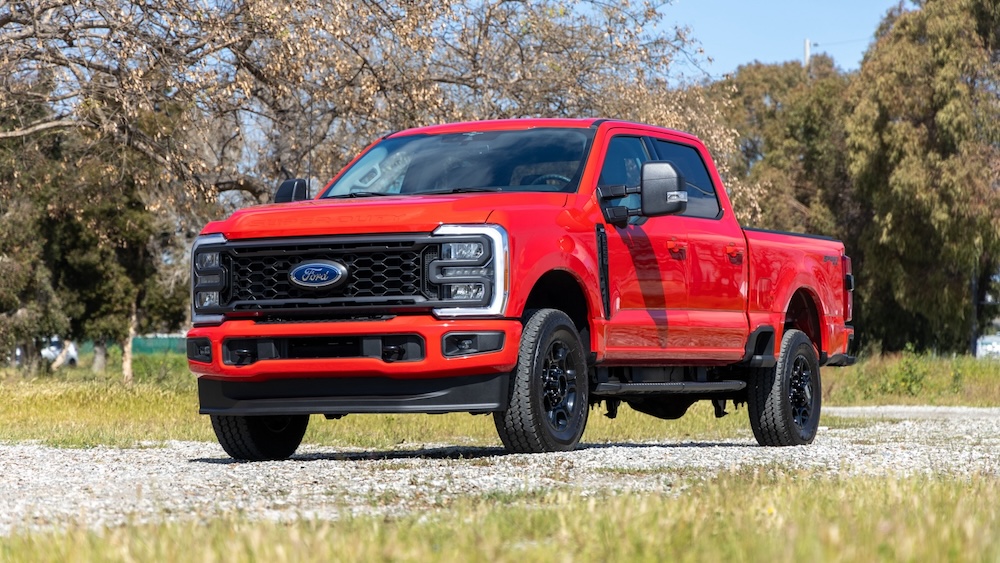
After a long winter, here are some essential maintenance tips to help prepare any vehicle for the longer, hotter days of spring & summer!
When it comes to spring and summer maintenance, there are essentially three types of vehicles. Year-round, four-season drivers. Three-season drivers that stay inside through the salty winter months. And Sun-Belters that, typically, don’t see salt and slush. No matter what type you drive, it’s smart to check up on your ride each spring. Vehicles driven through the harshest months may need a little reconditioning love and attention. On the flip side, hibernating garage queens love to reveal new and long-gestating gremlins after waking back up for the season. And cars in the sun belt often end up with dry rotting and cracking rubber, not to mention bald tires.
So with that in mind, here’s a universal spring and summer maintenance guide for any car, truck, or SUV, which we’re going to break into three sections. Inspection. Preparation. And Test Drives.
DISCLAIMERS: 1) Working on automobiles is inherently dangerous; please exercise extreme caution and don’t be afraid to call in a trusted professional when needed. 2) This article features links to some (but not all) products from companies that pay to advertise on this site.
PHASE 1: INSPECT EVERYTHING
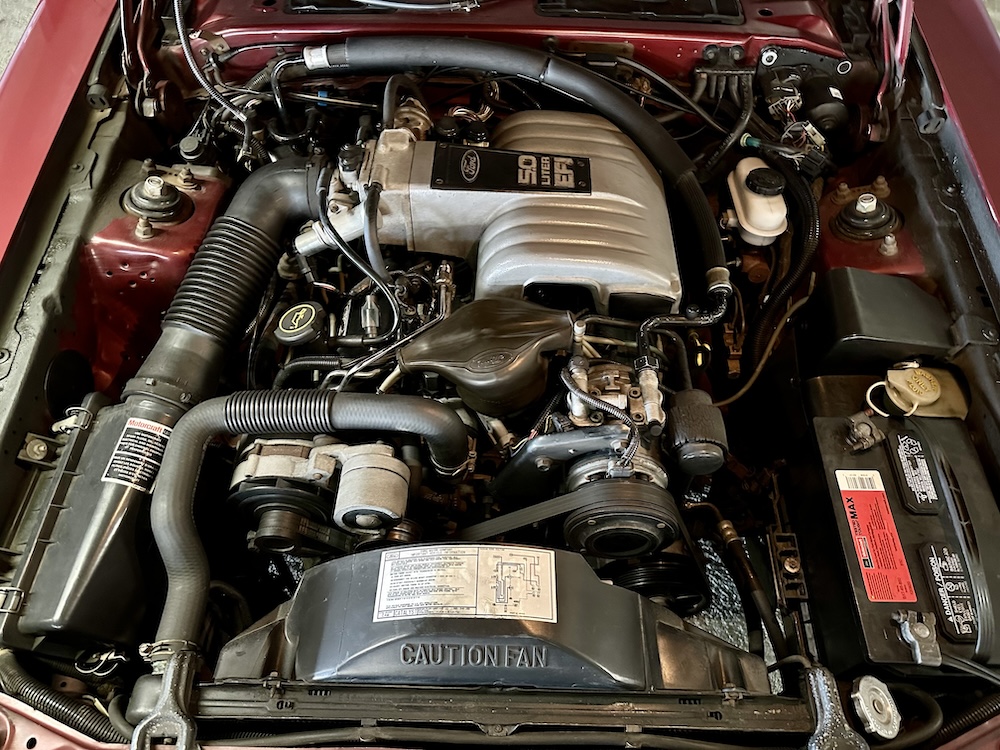
Unless you’ve recently run through a mud bog and can no longer see vital components, inspect your vehicle before washing and cleaning. Why? Time and dust/dirt are really good at revealing things like leaks. So avoid cleaning up any clues that might help detect an emerging problem. The goal to find potential problems and assess how soon they should be addressed.
Here’s a quick list of things to inspect…
Battery
- Is your battery leaking or bulging?
- Is corrosion foaming on and around the terminals?
- How old is your battery?
To check the health of a battery, pick up a product like a TOPDON V2200Plus Jump Starter and Battery Tester. Not only can it rescue you if your battery dies unexpectedly, but it will tell you how healthy your battery is and let you know when it’s time to replace it. Many new batteries come with 2-3 years of replacement warranties. After about 5 or so years, it’s important to be aware of a battery’s health. A well-maintained battery can last a decade, but weather and driving habits play a big part.
Engine Bay (Hoses, Belts, Leaks, Unwanted Guests)
- Are your belts and hoses cracking, too stiff, and/or bulging?
- Are any pumps, reservoirs, valve covers, hoses, fittings, or connections leaking or cracking?
- Are puddles, pools, or drips forming underneath your engine oil pan, transmission, transfer case, or differentials?
- Is there any evidence of animal habitation (droppings, acorns, other debris)?
Various oils and fluids smell terrible when they cook on exhaust components and can damage wiring harnesses and sensors. It’s best to fix a small leak before it becomes a big leak. And if you see signs of furry squatters, check wiring for damage as well as open up places where animals could hide (air filter boxes, etc.).
Tires
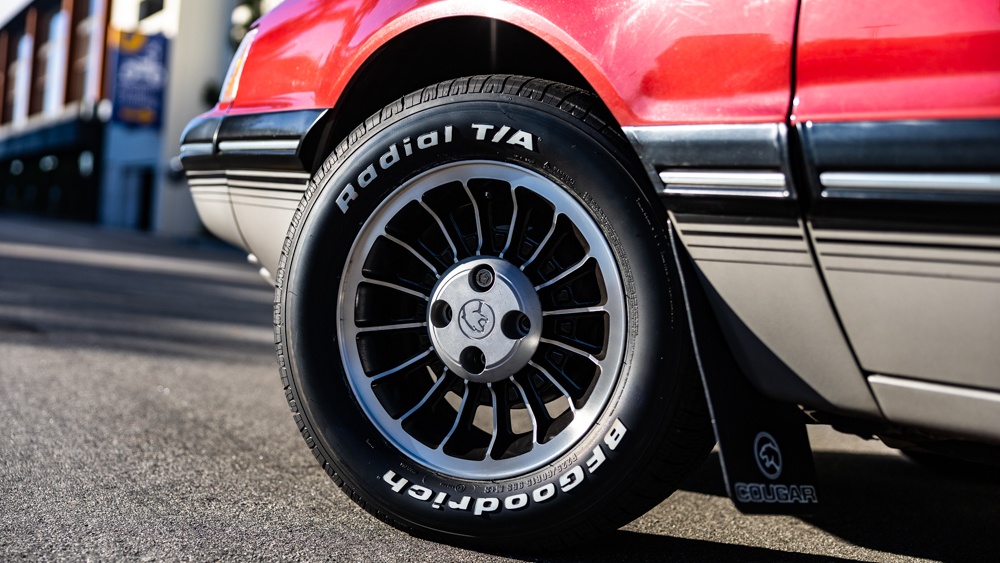
- Do your tires still have enough tread depth?
- Is the tire pressure set to factory specifications (usually found in the door jam)?
- Is one tire’s pressure lower than the other three? (This could mean a leak)
- When did you last rotate your tires?
- How old are your tires?
Even if your tires look okay and you have plenty of tread, check each tire’s DATE CODE on the sidewall, which is the last four numbers on the line that starts with “DOT” (Department of Transportation). For example, if you see “1523,” that means your tire was produced in the 15th week of the year 2023. Most tires are good for about 5 or 6 years. Afterward, especially with any kind of ultra-high-performance summer or all-season tire, the rubber compounds start to harden, reducing traction. Lifespan varies (check with the tire manufacturer), but one thing is clear —
If your tires are 10+ years old, please, please, please replace them even if they have lots of tread.
As for what to buy, check out our friends at Atturo Tires who make a wide variety of street, off-road, and performance tires for trucks, SUVs, UTVs, sedans, EVs, and sports cars. Both American Trucks and American Muscle are official Autturo dealers and carry other tire brands and Ford truck parts as well. Lastly, if you have a classic Ford truck or a Mustang, we really enjoyed our time with the BF Goodrich Radial T/A.
Suspension & Wheel Bearings
With your vehicle safely lifted and supported off the ground — please be safe — look at the suspension components at all four corners.
- Are the shocks/struts leaking any fluid?
- Is one corner or half of the vehicle sagging?
- If you shake the vehicle, does anything clunk or squeak?
- Are any of the rubber components torn or dry-rotting?
- If you wiggle the wheels at 12-and-6 as well as 9-and-3, is there any play or noise?
Healthy suspension components should be squeak, rattle, and clunk-free, and all of the bushing materials — rubber, polyurethane, etc — should be free of rips or tears.
Brakes
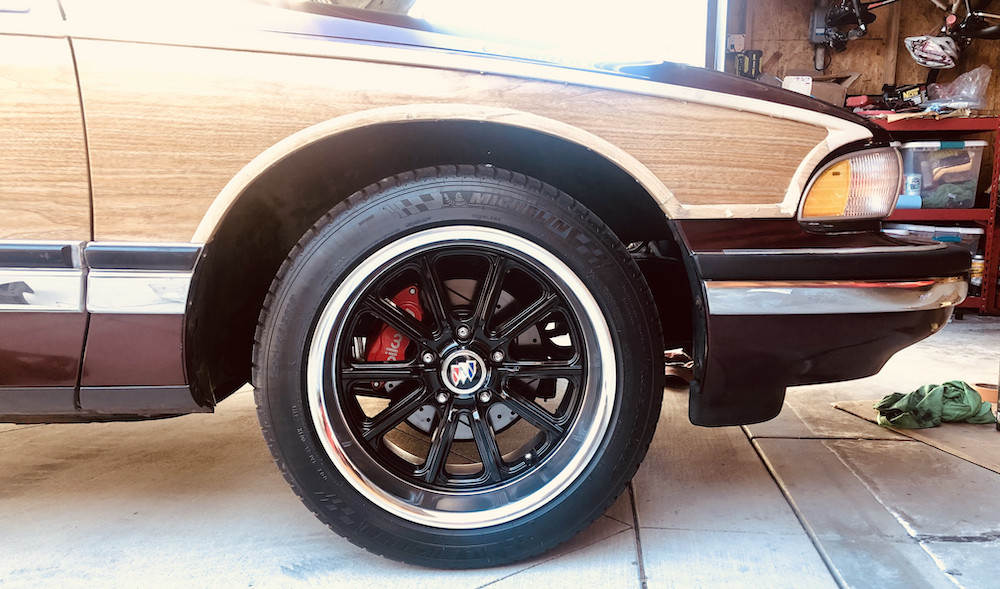
- Does your brake pedal feel firm and solid? (If it’s squishy you may have a leak or air bubble in the system)
- Are the rotors grooved or smooth? Is there enough metal?
- Do the brake pads have enough material?
- For an older vehicle, do the drums and shoes have enough material?
- Are there any visible leaks at the rotors, drums, or along the lines?
- Is the brake fluid fresh? (If it’s inky and black, it’s probably time for a flush.)
Surface rust may form when a vehicle sits, but good brakes should have enough a firm pedal, clear or amber brake fluid, and plenty of friction material left on the rotors and pads (or shoes and drums).
Rust
For vehicles that see salt and winter, it’s important to look under and around your vehicle for signs of corrosion and rust. This is especially important for the vehicle’s frame, braking components, and exhaust/emissions components. If you can put a screwdriver through any piece of metal, you need to speak with a professional ASAP.
Owner’s Manual, Wiper Blades, & Fluids
- Are your wiper blades soft and flexible?
- Have you refilled your washer fluid reservoir lately?
- How old are your fluids? (Engine oil, transmission, power steering, brake, coolant, transfer case, DEF, differentials, etc.)
- Are they topped off and in good condition? (Older fluids tended to be dirty and darker.)
- When is the next major service and what’s involved?
If your wiper blades are stiff, torn, cracking, or skip across the window, replace them. Also, familiarize yourself with your vehicle’s recommended maintenance schedule, which is typically based on 1) mileage, 2) driving conditions, or 3) time, and includes fluid lifespans as well as other maintenance items.
PHASE 2: PREPARATION, REPAIRS, & DETAILING
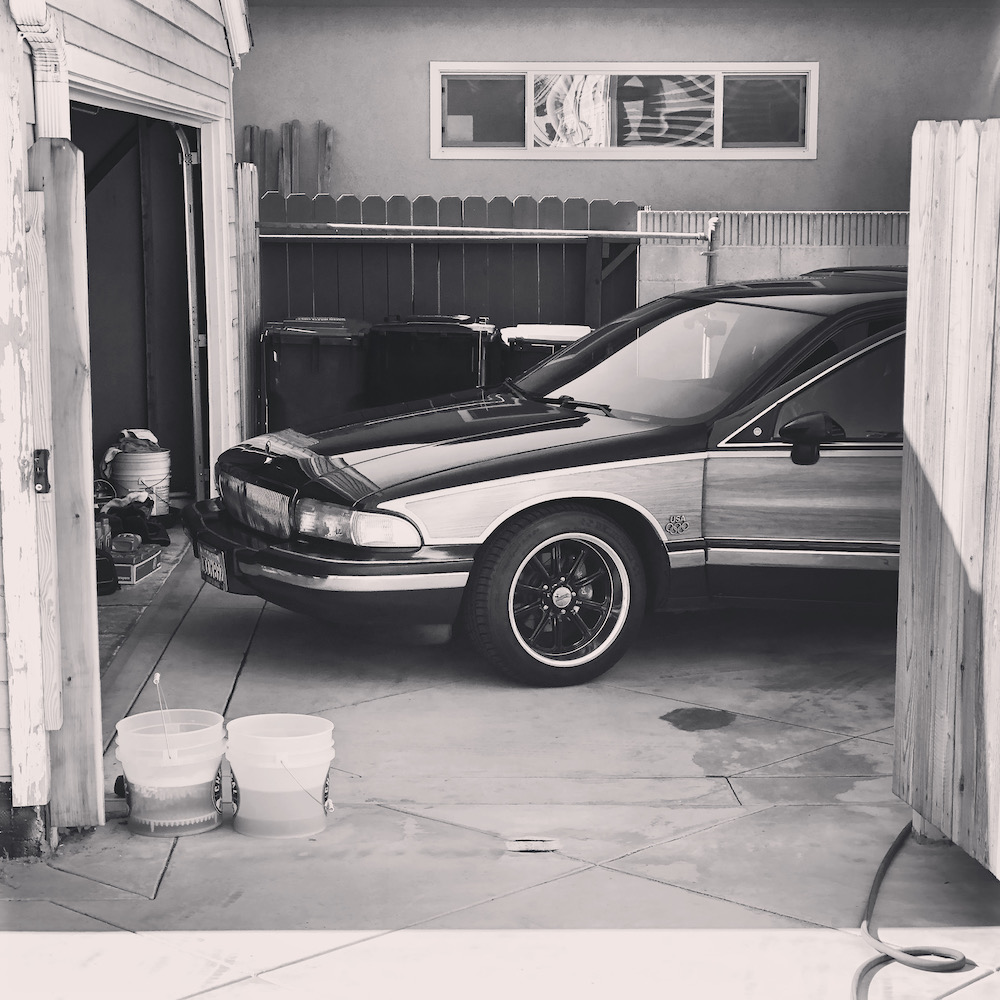
Now that you’ve thoroughly inspected your garage queen or winter warrior, it’s time to put everything you learned to good use and prepare for longer days and warmer seasons. Here’s what you need to do.
Order & Replace Worn Out, Leaking Parts
Depending on your vehicle’s age, it may be time for some new parts and/or a major service. When looking for parts, we recommend shooting for —
- OEM (Motorcraft, GM Genuine, AC Delco, etc.)
- The performance upgrade (Ford Performance, etc.)
- High-quality, well-reviewed aftermarket parts from reputable brands (Holley, etc.).
After cross-referencing OEM part numbers and specs, here are my go-to sites for parts —
- Holley (swaps, exhaust, gaskets, fuel systems, custom applications, and more)
- Summit Racing (they sell almost everything with super fast shipping and amazing customer service)
- American Trucks (the go-to place for truck parts, tires, and mods)
- American Muscle (for sports & muscle car mods)
- SpeedwayMotors (terrific prices and quick shipping on harder to find mods)
- Amazon (always look here first if you have Prime, but selection is limited)
- eBay Motors (for weird, custom, and cheap parts, and now with a fit guarantee)
- RockAuto (if someone still makes a part, they have it. but the return policy and customer service can be frustrating. still, a great resource for research and cross-referencing.)
Now might also be the perfect time for a new modification. A lift kit on a truck. A new set of performance tires for your Mustang. New brakes. Maybe a louder exhaust? How about some added power from a supercharger kit?
Top Off and Replace/Flush Fluids As Needed
After inspecting your vehicle and/or performing any repairs or maintenance, make sure your fluids are fresh and/or topped off as needed. Also worth noting: some fluids, automatic transmission fluid for example, require that the vehicle be running and up to operating temperature before checking levels. Again, the owner’s manual can help you figure out fluid specification requirements, mileage or age-related replacement needs, and instructions for checking levels.
Cleaning & Detailing
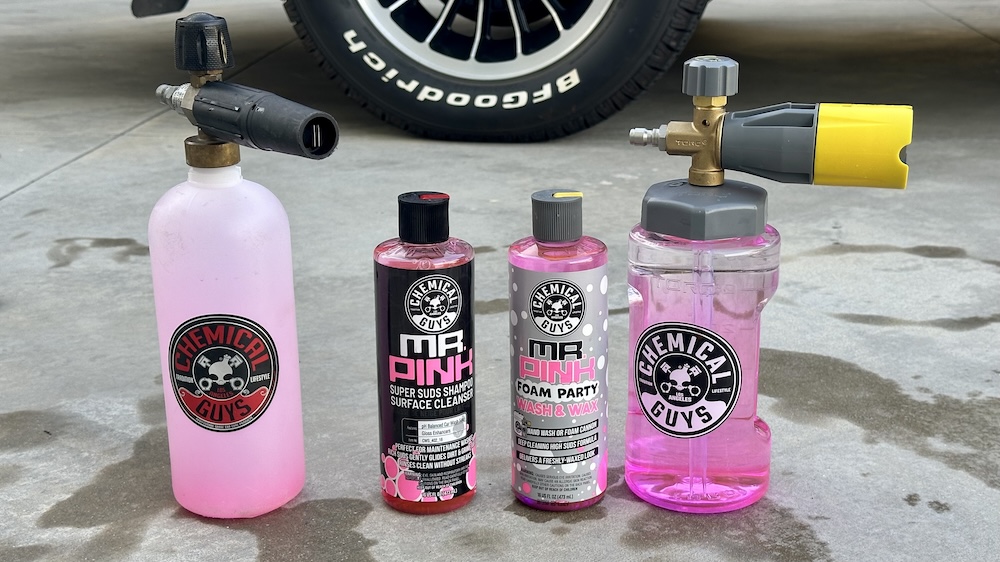
With old/bad parts replaced and your fluids topped off, give your rig a wash and detail. Not only will it help your ride look its absolute best, but a good detail helps remove corrosive contaminants, protect painted surfaces, and rejuvenate plastics and leather. I’ve been using a variety of Chemical Guys products for the last few years (their original factory was 10 minutes from my home), but there are many great brands out there that make high-quality soaps, cleaners, and protectants. Here’s a quick checklist of things to do, especially after a harsh winter season —
Interior Detail
- Vacuum the entire interior (seats & carpets & storage)
- Clean the cloth or leather seats and the carpets
- If equipped, treat the leather to protect and moisturize
- Wipe down plastics, screens, cupholders, and the dash
- Apply protectant as needed, but nothing too reflective
Exterior Detail
- Pressure wash the entire undercarriage (you may want to apply an undercoating)
- Lightly clean the engine bay as needed (NO pressure washing or harsh chemicals; be careful of wires and air intakes)
- Clean the wheels and tires to remove brake dust and road grime
- Pressure wash the exterior of the vehicle and then soap up with a foam cannon
- Wash and dry the vehicle from top to bottom
- If the painted surfaces feel rough to the touch, decontaminate with a clay bar
- Remove scratches and swirls with polishes and compounds as needed
- Seal the pain with a wax, sealant, or ceramic coating (you may need to layer this)
- Revive plastics and dress the tires as needed
Prepare an Emergency Go Bag
As one prepares hotter months of commuting or longer road trips, it’s a good idea to have an emergency Go Bag or some kind of kit that includes a few essentials to help recover in the event of a breakdown. Ideally, if you own more than one vehicle, you would assemble one Go Bag for each. Here are a few recommended items to include —
- Tools (a few common sockets, wrenches, and screwdrivers)
- First Aid Kit
- Jump box
- Portable tire inflator & tire patch kit
- Diagnostic Code Reader
- Flashlight
- Food & water
- Heat blanket
- Road flare(s)
- AAA membership
PHASE 3: TEST DRIVES & DOUBLE CHECKS
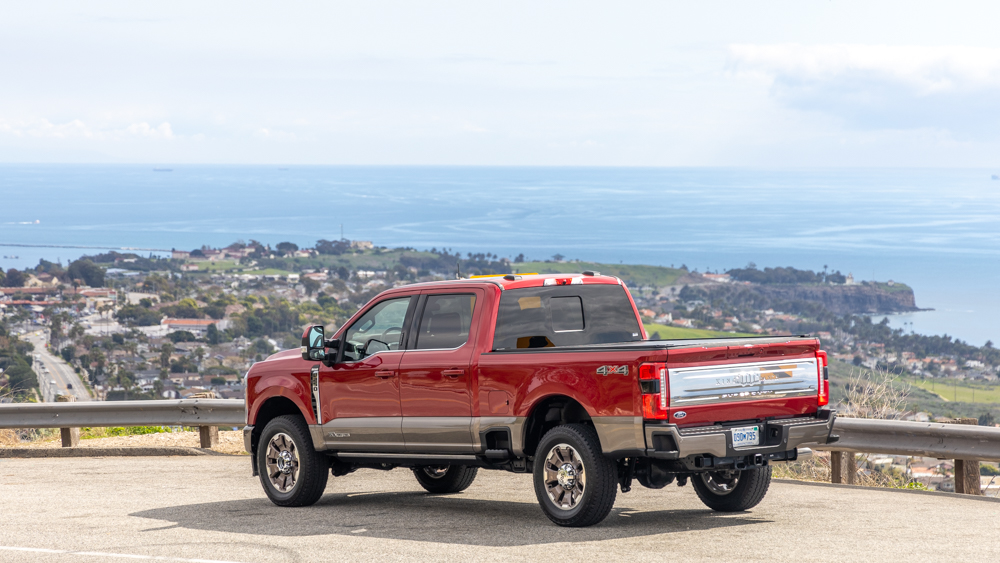
After inspecting, repairing/maintaining, detailing, and preparing your vehicle for the road, you’d think you’d be ready for the open road. And in most cases, you’re correct. If your daily driver doesn’t need any repairs and the fluids all look good, keep calm and carry on. However, if your vehicle has been sitting for months and/or you did any kind of major service or repair — especially things with hoses and fluids — we recommend a more moderate approach to getting back on the road.
Not So Fast: First Start & A Quick Drive
After a vehicle has been sitting for months (or years), or after a major repair, it’s important to be careful during the first startup because this phase might reveal more than the visual inspection above. After ensuring that you have the proper amount of engine oil and a good battery, fire up your vehicle then listen and look around.
If anything seems wrong, turn your vehicle off immediately.
- Is the engine running smoothly, or are there any strange noises?
- Is there any smoke coming out of the exhaust?
- Are there any fluids leaking from the engine bay or underneath the car?
- Can you put the vehicle into every gear and will it roll forward and backward?
- Are the brakes working normally?
- Is the check engine light or any other warning lights on?
- Is the vehicle’s temperature rising normally? (not too cold, not too hot)
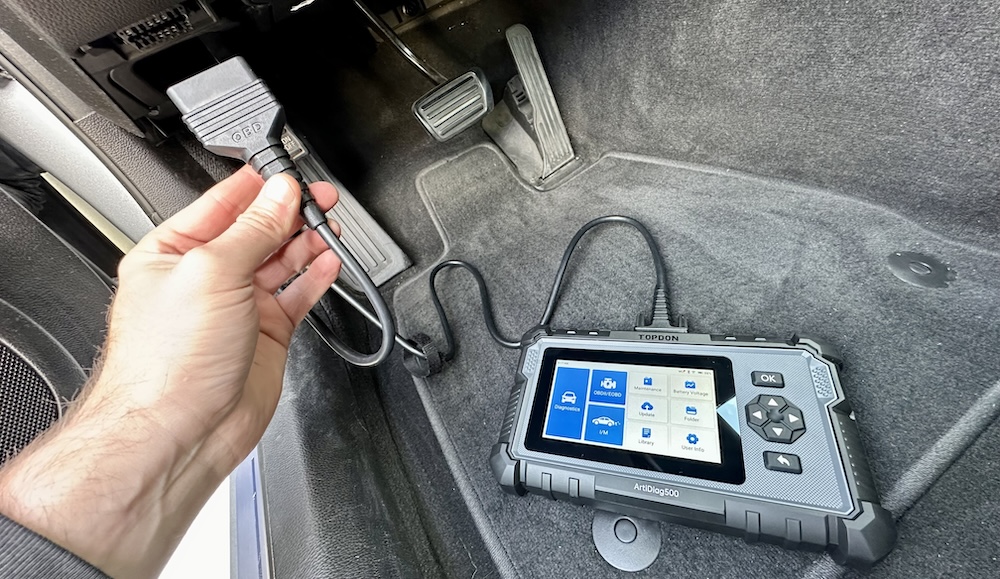
After the first start, if everything seems normal with the engine, we recommend checking several other components —
- Windows
- Locks
- Radio
- Lights (headlights, taillights, hazards, blinkers, interior lightning)
- Air Condition & heating
- Gauges and screens
If your check engine light is on, or if you are curious if the vehicle is running correctly, it might be worth using a diagnostic code reader to check with your vehicle’s computer(s) to see if there are any fault codes. (Our sponsors at Topdon make several different models from DIY entry-level units to professional mechanic level versions. Click HERE to learn more.) Code readers plug into the OBD2 (On Board Diagnostic 2) ports that have been standard on all makes and models here in the United States since 1996. They are able to communicate with your vehicle’s various computers to help diagnose problems.
If everything is working as it should and nothing is leaking, roll the vehicle forward and backward to double-check the brakes. Extremely slow at first. Then a little faster with each check. If all seems normal, proceed to the next step.
The First FULL Drive
With no major problems popping up during the initial quick drive (or tour of your driveway) and everything seems safe, it’s time to put on a few miles at higher speeds. Again, if your vehicle is a daily driver and you didn’t do any major work, you’re probably good to go. But if your vehicle has been sitting for months (or years), we’d avoid driving too far or jumping into rush hour traffic on a hot day. So maybe plan to cruise some backroads or a quiet highway during a time when traffic is light.
The goal is to get your vehicle up to operating temperature and make sure everything is still safe and operating normally. Ask yourself —
- Is it overheating? (Or not warming up?)
- Is it braking normally? (Any odd noises)?
- Any odd noises or clunks when you go around a corner?
- Does the alignment feel correct? (Is it driving straight or pulling to one side?)
- Is your vehicle accelerating normally? (Or does it feel sluggish?)
- Are there any odd smells?
- Are any warning lights popping up on the dash?
- Is everything working as it should?
After a nice cruise — somewhere in the 10 to 50-mile range — bring your vehicle home and do a quick re-inspection —
- Are the fluid levels still correct? (Did anything drop?)
- Did any leaks or drips appear?
- (Optional, but especially if there are any warning lights on the dash) Are there any new trouble codes in the computer?
Very generally, after completing these spring and summer maintenance tips, you should now be ready to enjoy your spring and summer in your refreshed vehicle. Future problems may still present themselves as you rack up hundreds or thousands of miles. This is especially true on older vehicles, modified vehicles, and/or vehicles that have been sitting for months. But by thoroughly inspecting your vehicle, performing necessary repairs and maintenance, and preparing your vehicle for the coming summer, you’ve done as much as you can to prevent an unwanted breakdown or surprise repair.
Happy driving, everyone!

